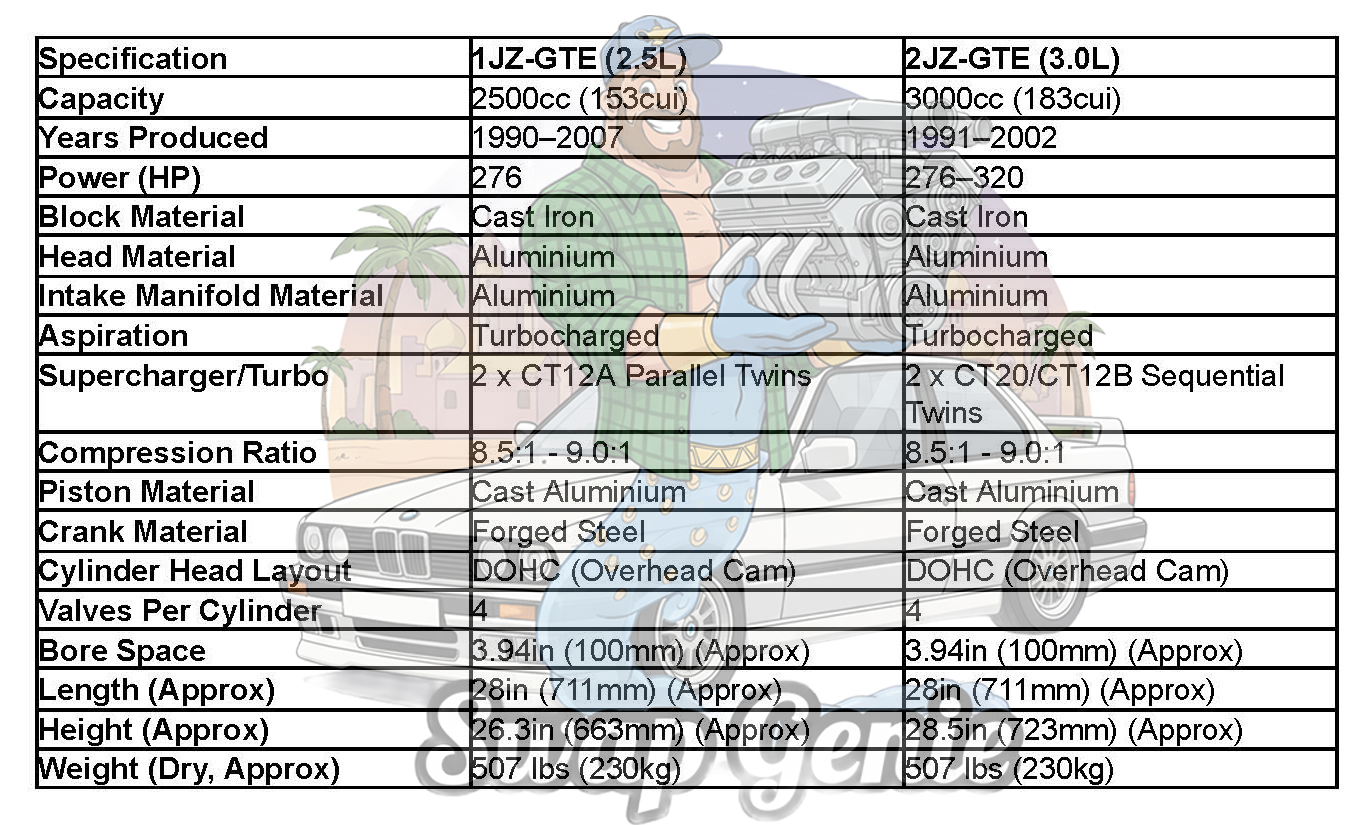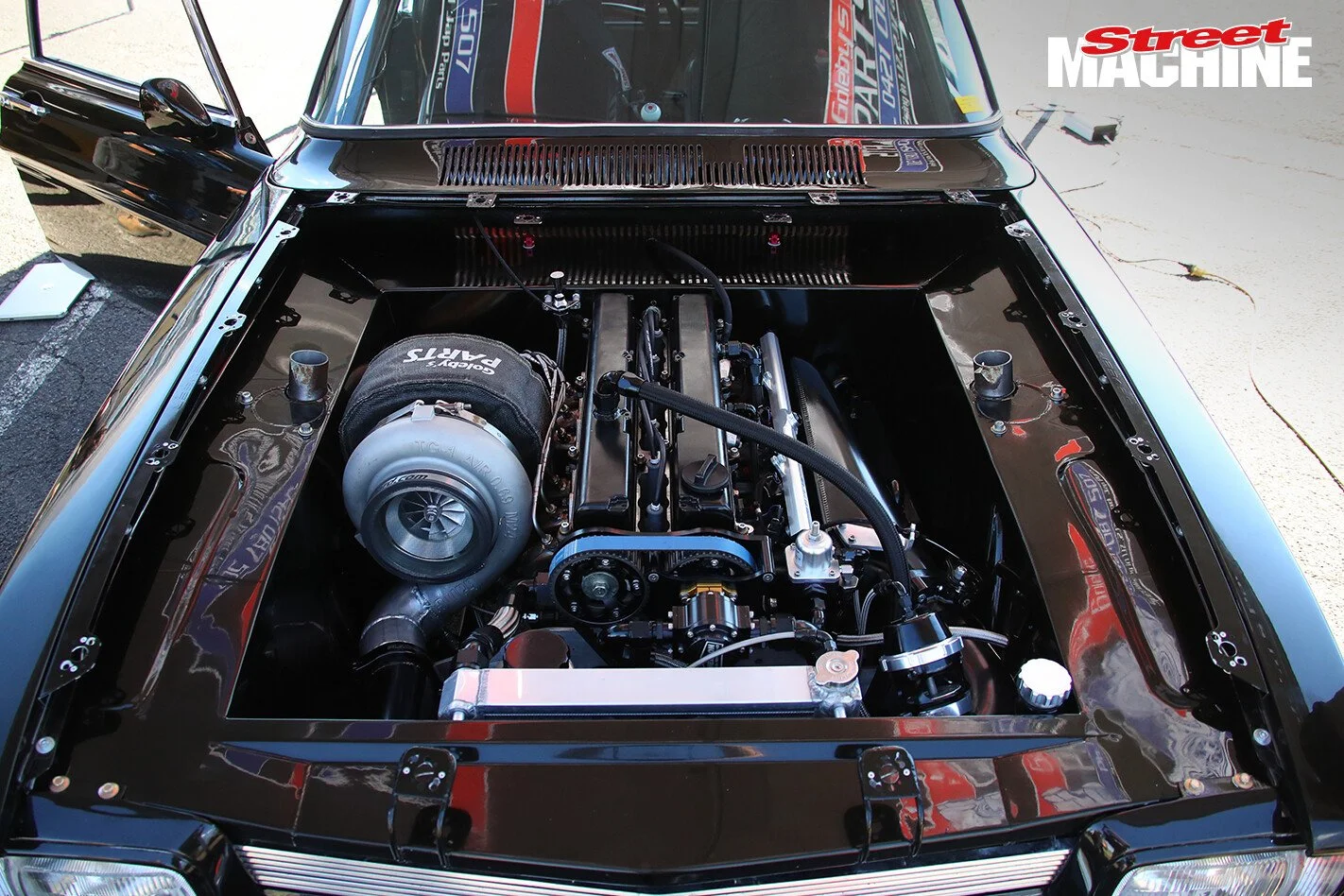Engine-pedia: everything you need to know about Toyota's epic 1JZ
Toyota introduced the 1JZ engine series in 1990, replacing the aging M-series in-line-six-cylinder engines. With a design focus on smoothness, durability, and performance, the JZ engine family quickly became a cornerstone of Toyota's premium and sports car offerings.
The 1JZ-GE (NA) and 1JZ-GTE (turbocharged) engines were initially found in a variety of Toyota vehicles, including the Chaser, Mark II, Cresta, Soarer, Supra (JZA70), and Crown. Their robust design and excellent power delivery made them ideal for these platforms, and they were quickly identified as some of the best-designed 6-cylinder engines in the world.
Despite the engine being retired in 2007 its reliability and power-producing capability means it has been a staple of the drift world, especially as the 1JZ (and 2JZ) were only sold in rear-drive formats.
The 1JZ-GE is the naturally aspirated variant of the 1JZ engine and was designed to provide a balance of power, fuel efficiency, and refinement for daily driving and luxury applications. Featuring a capacity of 2491cc its iron block used 86mm bore by 71.5mm stroke to make it feel more eager to rev than its square (86mm x 86mm) big brother 2JZ.
With a 10.0:1 compression ratio and a high-flowing alloy cylinder head designed by Yamaha, the naturally aspirated 2.5L 1JZ produced between 180hp and 200hp, depending on market and revision. The 1JZ-GE was never offered with a manual transmission, only 4-speed automatics.
Early versions of the 1JZ-GE also featured a distributor-based ignition system, which was replaced by a more modern coil-on-plug-style ignition system in the mid-90s, while a 1996 mid-cycle update saw Variable Valve Timing with intelligence (VVTi) introduced. This yielded improvements in both power and torque output, along with enhanced fuel economy and a broader power band. The VVTi system allowed for continuous adjustment of intake camshaft timing, optimizing valve overlap for various engine speeds and loads.
While the NA 1J is a nice engine, car enthusiasts are most interested in the turbocharged 1JZ-GTE. Its block and bottom-end architecture are basically the same as the 1JZ-GE, the GTE scored lower compression (8.5:1) to handle the heat from the turbochargers. Early 1JZ engines feature twin Hitachi CT12A running in parallel with frail ceramic wheels, and they produced approximately 280hp (206kW) as per the Japanese manufacturers’ “Gentleman’s Agreement”.
Toyota updated the 1JZ with a larger single CT15B turbocharger in 1996. Along with adding VVTi, Toyota had Yamaha change the design of the alloy head to feature smaller ports to improve turbo response, while the compression ratio was bumped up to 9.0:1 thanks to efficiencies found with these changes. While Toyota retained the 280hp power rating torque jumped handsomely from 363Nm up to almost 380Nm.
The twin-turbo 1JZ is claimed to measure 860mm x 670mm x 665mm, in length, width, and height respectively. Interestingly, the 1JZ cylinder head is often used on max-effort 2JZ builds as it flows more than the 2JZ head.
The GTE is highly sought after for its immense tuning potential. With appropriate modifications like a larger turbo, and injectors, standalone ECU, plus better intake and exhaust, a 1JZ-GTE can easily produce 500hp at the wheels. Thanks to the engine’s popularity in drifting the aftermarket for 1JZs is immense, and its solid engineering base makes it fiercely reliable.
Another benefit to all JZ engines, 1JZ and 2JZ, is they were offered with a range of oil pan options, which makes them very attractive for engine-swappers. Having the option of a factory sump in front-hump, mid-hump, or rear-hump layouts reduces the risk swappers need to have a custom sump made (which is pricey and complicated).
Weaknesses of the 1JZ are mostly minor or age-related, as with many Japanese engines from this era. Aging coil packs can lead to spark break-down, while original ceramic-wheel turbos fail on early 1JZ-GTEs and the CT15B turbos on VVTi 1JZ engines are seen as a bottleneck for power. Early 1JZ-GTEs also suffered from failing one-way valves on the intake cam cover, which allowed oil vapour into the intake manifold, while the exhaust cam cover could also leak oil leading to premature turbo wear.
Weight is another issue. A dressed 1JZ-GTE weighs in at 210kg, which is a significant amount compared to newer alloy-block engines.
The Toyota 1JZ-GE and 1JZ-GTE engines represent a pinnacle of Japanese engineering from the 1990s. The GE provided a solid, reliable, and refined powerplant for luxury vehicles, while the GTE, especially in its turbocharged iterations, delivered exhilarating performance and an almost unmatched tuning platform. Their enduring popularity in drifting, drag racing, and street performance builds is a testament to their inherent quality, robust design, and the indelible mark they've left on automotive history.




